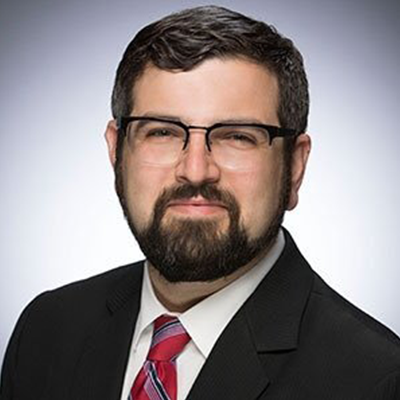
Welcome back to Work Minus, where we talk about what we need to drop from how we work today and quick pivots you can make to get closer to a better future of work.
Today our guest is Dakota Pawlicki, Strategy Officer for Community Mobilization at Lumina Foundation, and this episode is Work Minus Separation.
Hi Dakota. How are you?
Very good Neil, how are you?
I’m doing very well. Let’s just start off with Lumina Foundation – if people haven’t heard of it. What is it and what do you do there?
Lumina Foundation is a private foundation based in Indianapolis. We also have a small office out in Washington DC. And we’re unique in a couple ways. First is that we have one focus area, and that is learning after high school. Post-secondary learning, learning after high school, however you want to phrase it. But it’s much more than just colleges and universities. Really looking at what the nation needs to do to make sure we have the talent that we have for the future of the workforce. The second thing that makes us kind of unique is that we have a specific time-bound goal of making sure that 60% of Americans have a high quality post-secondary credential by 2025. And so, at our foundation we have a number of areas that work to improve the learning ecosystem for Americans after high school. Everything from federal policy and state policy to quality assurance to employer engagement.
My role here at the foundation is focused on cross-sector partnerships and collaborations that work at the local or regional level to improve the lives of their own neighbors and residents. So these are going to be cross-sector collaborations of colleges and universities, with employers, with nonprofit providers, and community based organizations. Sometimes they’re led by United Way, sometimes by the Chamber of Commerce, sometimes by the universities themselves, or by an independent 501(c)(3) organization. I get to work with hundreds of communities around the country who are working to improve the human condition.
Now I want to go back to something you said earlier about how you’re looking for 60% of adults to have a high quality credential. Tell us how that differs from just saying, “Hey we want you to graduate from college.”
That’s a great question and it’s an important nuance. You know, the fact is what really matters is that everyone needs to get some kind of learning after high school. When we look at the projections for what the workforce needs, it’s anticipated that over 60% of the workforce will need some kind of learning beyond a high school diploma in order to have a have a job, let alone a well-paying job, and one that can lead a family to self-sufficiency.
So high-quality credential for us means basically two things: One, that any learning that you get after high school can continue on to additional learning. We don’t want a dead-end degree or a dead-end credential that you might earn, and that doesn’t actually stack or lead into something else. Everyone is to have a pathway in front of them, so this way they can continue to get more and more education as they move forward.
The second part of that high-quality piece is that it actually leads to good employment. And that one is a little bit stickier in terms defining what we mean by ‘good employment.’ Especially when you start talking about wages and the difference between wages around states and regions, etc.
But what we really know is that there’s an awful lot of folks who are still living well underneath the poverty line – including those who have some post-secondary credentials. And so we’re looking for ensuring that Americans have a credential that allows them to truly participate in tomorrow’s economy.
Alright well let’s take another step back, and talk about today’s world as a whole. I mean, when we look at the nature between work and education, there definitely seems to be some disconnect between what employers need and what skills people are coming out of high school with or even out of college with, in some situations. Is that something that’s kind of a recent phenomenon, or has that been there for a long time? Can you take us to a time in history when it wasn’t there?
Yeah, I can. I think that it’s a little bit of the blame game, if you will. Where we like to point the finger down the pipeline and say, Well you just didn’t prepare them well enough. And employers will point at colleges, or universities, or technical colleges, or other providers and say, Well you just really didn’t prepare them. And they’ll say, Well you know the high school didn’t prepare them, and then we start looking at 8th grade algebra and saying, Well gosh, they weren’t prepared then….and well, what if they would have learned to read by 3rd grade…well if you would have went to Pre-K…well if we would have had better prenatal care…and then suddenly we wind back up at blaming employers for not giving enough to our doctors to do what they need to do. And so this blame game is old, tried and true.
But it’s not to say that there wasn’t, and hasn’t, been a great deal of collaboration between employers and the education sector, generally, over the course of our history. And in fact, you can find technical colleges and polytechnic colleges as far back as the 18th century. Certainly around World War II, and post-WWII, there was a greater connection between the higher-ed marketplace – the education marketplace generally – and employers, where articulating the needs and really coming together in partnership to make sure Americans have the skills and training needs for the jobs that we as a nation needed. There is a high concentration at that time.
But like all things, they ebb and flow. And they ebb and flow for policy reasons, they ebb and flow as new mandates come on the education sector, as new mandates come onto the business sector. They also ebb and flow because of our economy. And as the shape of business changes, it sometimes and oftentimes will change at a more rapid pace than education institutions can keep up with. We see that a lot with the emergence of technology and advanced manufacturing. And a lot of these pockets where, simply, the needs of employers have outpaced what education providers have been providing them. That’s not to say that education providers aren’t trying to scramble to catch up, but there’s always an ebb and flow, a tension. And we have to respond to that tension. And there will be a new challenge up as we get closer to automation and the future of work conversations, where additional tension will build. And we’ll respond to that challenge when that time comes.
That’s a great historical overview of what we’re talking about here. That there is that disconnect – but it’s not because anyone’s trying to make it, it’s it’s because things change at different paces and it’s hard to to keep up with those things.
When you look at how people are coming into the workplace, what are some of these across-industry competencies that some people just haven’t built up in high school, or even in the college setting?
You know, what we hear most the time from employers – especially employers that were trying to get into this conversation for the first time – is that, they’ll say things like, Well you know if we can just get someone to show up on time, and be ready to work, and have some of these ‘soft skills’…we can’t get people to even write a good email, or can’t get people to show up on time.
And I’m not saying those things aren’t true or that they aren’t important. They certainly are. But I also view that as kind of ‘Step One.’ And oftentimes it’s kind of a pothole to these partnership discussions. Yes, people needs soft skills and certainly our education providers, both in K-12 and then post-secondary/after high school education providers, are working on equipping students with those soft skills and intellectual abilities to be able to work in any environment. But there are numerous of these ‘hard skills’ and knowledge and abilities – competencies is another way to think about this – that folks do need, adults and learners need, to be able to pursue in the workforce.
The real challenges that those are highly unique, depending on which industry you’re talking about. And that’s just the fact of the matter. Manufacturing for example – a lot of folks are going to need to know how to code, how to be able to work with computers, have good computer literacy in order to continue operating even at an RV-making facility, for example. In other instances, we’re really talking about employers who have been used to being able to ‘train up’ their own people, on their own processes, on their own knowledge and skills. And really what we need to make sure people are leaving with is the ability to have transferability between and among roles, within an organization – or between and among roles within or among various employers. So really, taking a look at the core competencies that the jobs of today and tomorrow require, is really what we should be talking about and focused on.
So you talked about ‘training up’ people, trying to get them, once they’re in the job even, to continue to educate them. So just because it’s so hard for some of our older and more established education system to keep up with the pace, what is the approach for an employer? Should they try to partner with that education institution, and inject some some of these things to learn in, or should they just kind of create their own separate university, or through internships or apprenticeships? What’s the best practice for employers?
The best practice is the partner. As arduous as that might sound to some folks and saying, Gosh you know we just don’t have the time – we don’t have the time. You know: make the time to partner. Because that’s going to be a long-term sustainable solution. We have seen many large employers – employers like Amazon and Walmart and Discover Financial – who have done this well. Who have created effective partnerships with providers – and multiple providers, not just one. Ensuring that employees can go get the education that they need to either scale up or just continue on the path of life. We also see this, though, with small-and-medium-sized employers.
One really great example is up in Elkhart County, Indiana. Where – because employers had felt the need for a workforce that was trained in the way to meet the jobs they needed – they created their own organizing coalition. That is a community-based a coalition called the Horizon Education Alliance. The Horizon Education Alliance brings together all the employers, as well as community providers, as well as Ivy Tech Community College and Goshen College, to say: How are we better training the adults that are in our community? And also while we’re doing that training, that is clearly matched to what the employers need, and is leading to the high-quality credential that we talked about earlier – they’re also bringing community providers to address the other many needs and barriers that get in the way of adult learners. Things like transportation and childcare, even schedule. One of their key programs, the employer has worked out where they said, We can provide a training, we can provide certificates and certifications while we’re at work, while our employees are at work on the job floor, they’re going to be learning and earning these kinds of credentials.
Now, when they go to Ivy Tech to maybe go pursue that Associate’s Degree, or the next credential…we want to make sure that what you learned at that employer counts. And so you don’t have to go back through all this education that you already might have learned. It’s a waste of time and and no adult wants to waste that time out of their busy life schedule. And so that is what they’ve done, by coming together in partnering they said: here is all the learning, here are the competencies that our folks are getting while employed with us, here’s how we can transfer that into and be recognized into the higher education system. So this way someone is on a continuous path forward to additional education. So in short, we would say: ‘partner’ before you go and and make your own program.
If I can I’d like to bring up maybe one or two other points on this if that’s okay, Neil.
Yeah, and if you could go more into also the local aspect that you run, because I know that that’s an important part of what you do with Lumina – is identifying these local communities who have partnered in, and taken a real interest in those areas. So why don’t you get into that little deeper.
Yeah absolutely. I mean, we’ve seen examples – and I won’t name employers here – but we’ve seen examples where employers have created their own credential. And in order to do it, they’ll say to their employees, We offer this credential on ‘X’ topic and if you get ‘X’ credential, that is going to open up internal doors to promotion here. And in some cases, they actually charge employees to get it. Or, they charge potential employees. They’ll say, If you want a job here you should get this credential. The problem is that: one, it’s not a guarantee. It’s not a guaranteed promotion – as of course, you can’t promote everybody who’s going through it. You only have limited jobs at this upper level. The second part is that that credential doesn’t count anywhere else besides at that single employer. And so that adult who has just spent time and money and effort into getting that credential, earns it, has is, and then says: why didn’t get the job, I didn’t get the promotion. And then goes the employer next door, that employers says: this means nothing to me. And so that is really the value of partnership. And that’s what the local partners I get a chance to work with see.
Out in Colorado – the Denver Education Attainment Network (DEAN) – has brought together for colleges and universities and their K-12 partner. And their mission right now is to align the pathways through all five of these education providers, from the K-12 all the way through a 4-year degree, that map specifically onto four industry areas. That are responsive to what their need for transportation logistics, and for professional services. So this way if a student leaves high school and they want to go to Emily Griffith Technical College, and then they go over to Metro State to get that bachelor’s degree, they’re still on a common pathway where all their learning actually is recognized, and counts. They don’t have to retake classes, they don’t have to spend limited financial aid dollars on taking classes that they might have learned elsewhere. Everything is stacked right into each other, and leads to a job in a high-demand area.
Alternatively, if an adult is going back and taking classes at the community college and earns an Associate’s Degree, but also realizes they need a new credential – another certificate or certification – in order to get a job in advanced manufacturing, that Associate’s Degree is going to be recognized by Emily Griffith Technical College – who can then say, Great, you already have this, maybe it’s only gonna be a matter of a couple courses that you need to take. And you can get that done in 6 months, rather than having to go through a brand new program. And that’s really the power of local-based partnerships coming together to be a neutral convener to bring all these folks together, all the systems together, to clearly map out what it means for the learner. And necessarily what it means for the education provider, what it means for the employee, but what it really means for that learner to make sure that the region is economically sound.
So I’m gonna put you on the spot here, Dakota. In terms of: you’re someone who’s seen this from a lot of different angles, you’ve got a big goal to try to reach this level of high-quality credentials, 60% of people. What are some of the dead-end solutions you feel are out there that either you’ve tried in the past, you’ve seen other organizations or educational institutions try, and just no matter how much time and money you put into it, it’s just not gonna work. What are some of those dead-end solutions?
That’s a great question. I mean, I think some of the dead-end solutions are those that…it kind of goes back to our definition of high-quality, right? The programs that we spring up, within the education sector, that do not have a connection to a further pathway. That is a clear dead end. Also, it’s really about taking a competency-based approach. So, in higher education there’s a lot out there right now about ‘prior learning assessments.’ And it’s hard to treat this as a monolith, because there are really wonderful, large, good practices. And we want to meet people where they’re at.
But a lot of times what’s happening is that a learner, an adult learner, maybe someone who has never gone to school, or maybe they went to college for a little while, dropped out a long time ago and it’s been fifteen years, but they have children, and college is fast-approaching for their kids, and they want to make sure that they can send their kids to college, and so they need to go back to school. And what we do pretty poorly with some of these ‘prior learning assessments,’ is it we make that student advocate to each individual institution in a different way. And so you can imagine if you’re an adult and you hold some kind of credentials, you’ve gone through some kind of education – and you bring it to Community College A, and they say: Great, with this we’re gonna give you 12 credits. But they go to Community College B, and they say: With this we’re going to give you only 6, and Community College C says: We’re going to give you 15. And they don’t make any sense. There’s no uniformity to that. And it makes it impossible. These are all just barriers we’re creating for that learner, and so we need to get better at talking about competencies. And identifying very clearly what competencies are embedded in which learning opportunities, and providing effective an objective ways that allow individuals to demonstrate the mastery of that competency, so they don’t have to go out and rely on individual advocacy.
And I think that that’s a real opportunity for us, particularly in this space, as we look to get more and more adults back enrolled. And the only thing I’ll add to that is: we need many, many more – in fact, we need 11.6 million – adults to go back and earn a credential. That’s the only way we get to ‘Goal 2025.’ The enrollments of the traditional-aged student, the unencumbered senior who’s going off to college, are declining. And so, higher education as an industry is smart to be responding to this constant-based movement, because that’s what adults want. Adults are asking the very simple question: What is different today than was the last time I thought about going? And so we need to be able to answer that question very clearly in a way that resonates with adults, that respects what they’ve already done and learned, even if that learning has happened in some place that was outside the four walls of a higher education institution.
I’ve even been thinking about the terminology that we use. When you said, We have to go back to school, you know – going back sounds like regressing, taking time off, stopping what you’re doing so that you can go back, spend money, and lose all this time to try to get something better. When the whole idea of education should be to push forward and to take something new that comes on as it comes through.
You’re exactly right, Neil, you’re exactly right. And that’s what our messages are, to adult students: Come back. Come back, we want you ‘back.’ And don’t get me wrong, there are places that are doing an awful lot to say: Let’s continue, let’s move forward, you have goals, we want to help you be part of that goal.
I’m really excited by a new program that was launched up at Wayne State in Detroit, where they said you know what? We need to change the opportunity for the folks who we already didn’t do well by the first time. And so they are offering – up to a certain limit – debt forgiveness. And just said, If you owe us money (up to a certain limit) you can come and re-enroll and get back on track with what you want to finish, or come and finish your degree, let’s figure out how long it’s going to take and we’re going to wipe out some debt to allow you to have the chance to move forward. And they finally just responded and said, That makes sense to us, we need to change the equation, we need to change the value proposition, and we need to do that for individual learners, and we also need to do that for those who are supporting those individuals – like employers. Many employers have tuition reimbursement programs that go horribly unutilized because folks just look at it and say, Well why would I go back to school right now? However, if they had a partner, if they had a postsecondary partner, that said here’s a clear pathway forward and here’s how we can best leverage this reimbursement program that you’re offering, this benefit that you have offering, you bet that adults will definitely take advantage of that.
In Columbus, Indiana they’re doing that. They realize that a lot of individuals at some of their small-and-midsize employers weren’t taking advantage of some of these tuition reimbursement policies. And so when they dug into it is, because an adult who is trying to raise a family of four, even if they wanted to go and pursue that next credential, they might not be able to afford the fork down the $3,000 tuition and fees up front, even if they’re going to be reimbursed four months later, upon successful completion. And that’s just such an easy barrier to mitigate. So with Ivy Tech Community College and many of these employers have done, is execute agreements between them that just says: What we’re going to do is delay payment until the end of the term, and then the university, the college, Ivy Tech, will actually just direct-bill the employer. So, the learner – so long as they pass their course – the only thing that should be hard is learning, right? So if they just do what they need to do, pass that course, they never see a bill.
And we are actually getting a much larger uptake of that benefit that has been previously locked, or unaccessible to so many adults.
It’s great to hear about those kinds of programs that are there. So we titled this episode as Work Minus Separation. Why don’t you close this off, just to give a little summary of what that means to you, and what does the world look like without that kind of separation?
The world without the separation looks like: employers, and education providers, and community organizations at the same table, sharing the same challenges. The fact is, we need many, many more places to ask themselves a very simple question. Which is: What more can we be doing together that we can’t do alone? Right now, we live in the age of the city. And the challenges that we face as a nation are local challenges. And we need local responses and local solutions to those challenges. The best way to do that is: there’s not one single organization in a community or state or even at the federal level who can respond to the very complex challenges that people are facing today. Everyone has a part to play. So, for me, we have to eliminate the separation. The siloing of employers, of higher education providers, of community organizations, that are providing great services, and get them at the same table. Get them to show up and listen together, and expect the same of each other. And to start partnering. The fact is, everyone’s going to need to change a little bit. Everyone needs to roll up their sleeves. But we can do an awful lot more together than we can alone.
Sounds great. Dakota, where can we go to stay in touch with you and with what Lumina is doing?
You can find out about our work, especially some of the ‘talent hubs,’ that are designated communities that are doing this cross-sector work at a really exemplary level at LuminaFoundation.org. And we really encourage you to come out and check us out.
Alright, sounds great. Dakota, thanks so much for being on the show and all the best to you as you continue on your goal.
Thanks Neil, it’s been a pleasure to be here.












